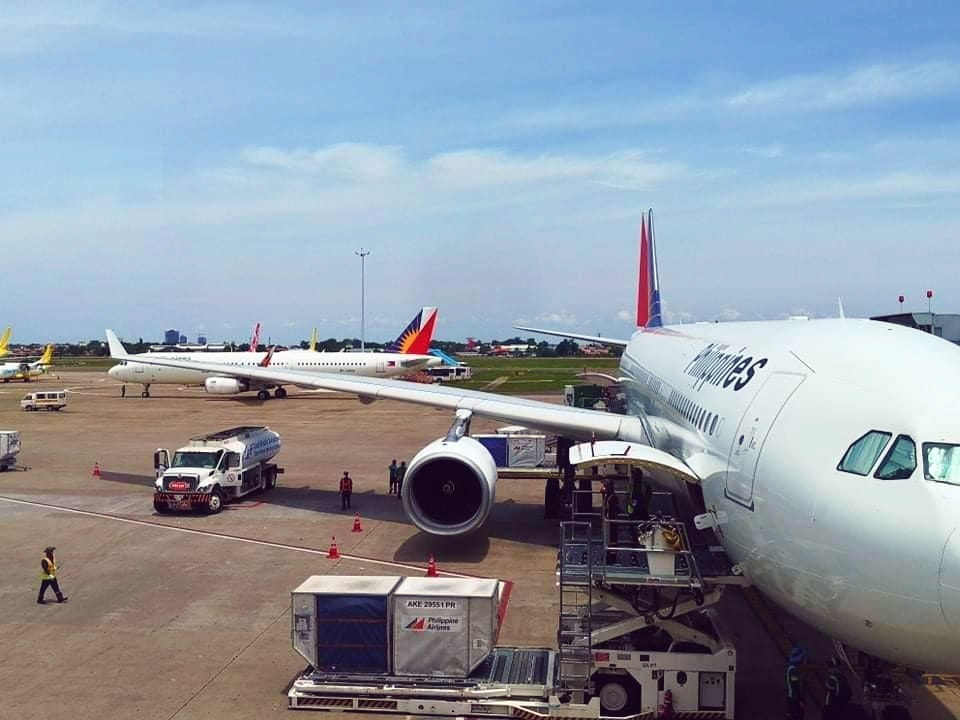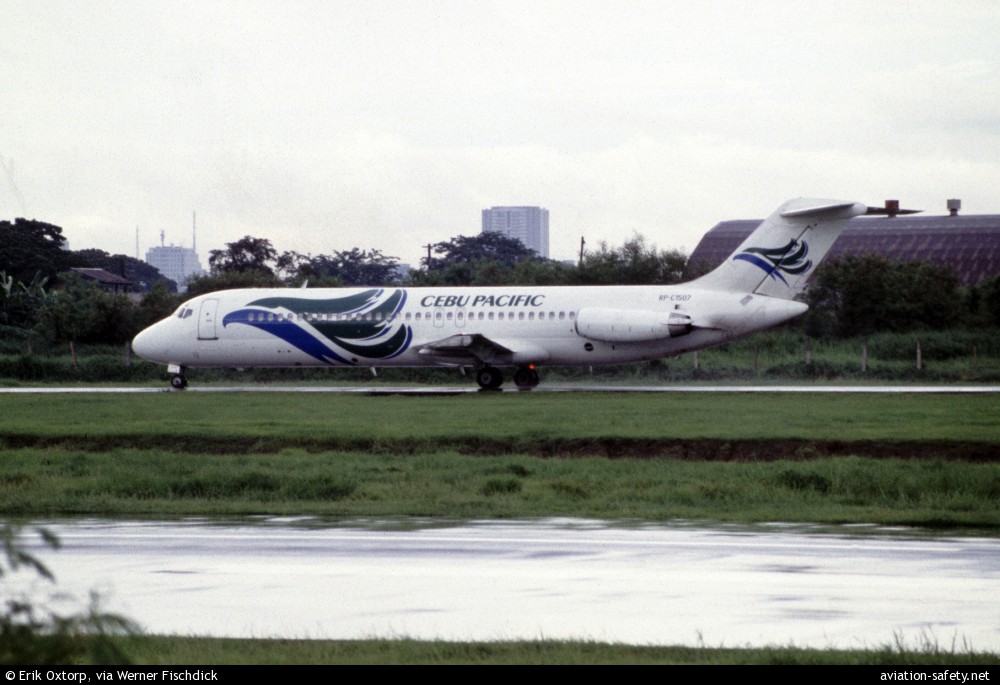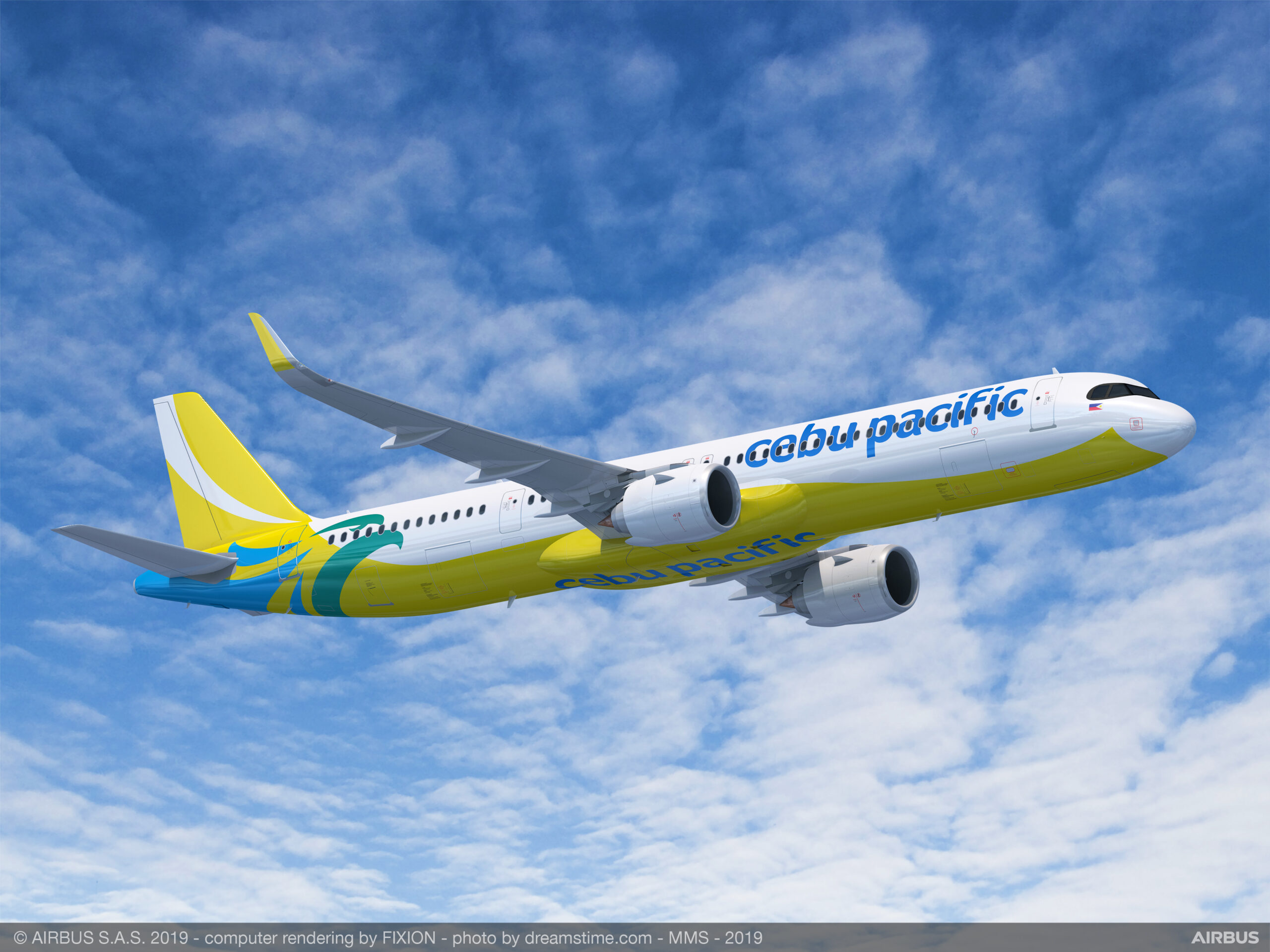More than two decades after one of the Philippines’ most fatal air crashes, the aviation community remembers the twisted fate of Cebu Pacific flight 5J-387 from Manila to Cagayan de Oro.
At 9:16 a.m. local time on February 2, 1998, a Cebu Pacific-operated McDonnell Douglas DC-9-32 aircraft departed Manila for Cagayan de Oro. 99 passengers and five crew members were aboard flight 5J-387, and they were entirely oblivious of what lay ahead for them.
RP-C1507 was an American-built aircraft that entered service with Air Canada in 1967. Cebu Pacific acquired the 31-year-old jet on March 17, 1997; it was reconfigured to an all-economy cabin with 110 seats all-in-all.
At 9:53 am, flight 387 made an unscheduled stop in Tacloban, Southern Leyte, to deliver spare tires for a stranded company airliner, RP-C1506. Approximately 9 minutes later, the aircraft departed for Cagayan de Oro, however, under visual flight rules (VFR) after passing over Butuan VOR.
After the aircraft traversed airway W9 to Butuan, the pilots made a right turn heading straight to Cagayan de Oro. There were mountains reported to be as high as 6,000 feet on the way there. At this time, the aircraft was flying under visual control from the pilots.
The crew contacted Cagayan de Oro Tower during the descent phase and reportedly informed them about their descent from 11,500 feet. The final radio transmission from 5J-387 was twelve minutes prior to its arrival. The DC-9 flight crashed at Mt. Sumagaya, Claveria, Misamis Oriental.
Officials reported that the flight had not given away distress signals or mayday calls. It left the air traffic controller clueless about the flight’s current situation. To give way to the supposedly arriving Cebu Pacific jet, a Philippine Airlines flight entered a hold per instruction from the tower. But none arrived.
Cagayan de Oro aerodrome reported no significant weather disturbances in the area. However, local officials believe the mountainous region on its flight path became foggy. It might have generated a severe downdraft—downing the jet and crippling it to ashes.
The rescue operations were a nightmare. Philippine military and national police authorities led the search and rescue operations around Mt. Sumagaya. While hoping to find any signs of life, the authorities failed.
Former Presidential Assistant to Mindanao Jesus Dureza claimed in a feature article for MindaNews that the Air Transportation Office (ATO), which is now known as the Civil Aviation Authority of the Philippines (CAAP), had incorrectly labeled maps regarding the actual elevation of Mt. Sumagaya.
This error proved to be significant. Jerome Garcia, the leader of the De Oro Mountaineers Explorers (DOME) and the first person to arrive at the crash site on February 6, 1998, was quoted in the same MindaNews article as saying: "Twenty meters more and the plane could have cleared the mountain. I think the pilots were desperately trying to pull up.”
Years later, the map was corrected, proving Dureza's suspicions.
The old map, which the pilots of 5J-387 used, displayed 5,000 feet above sea level (ASL) as the height of the mountain where the aircraft crashed. But the accurate and safe height reference would have been 6,000 feet ASL to avoid any disaster.
The pilots were flying at 5,000 feet above sea level (ASL) when they collided with the mountain, according to an audio recording from the cockpit voice recorder (CVR) of the aircraft. The shaved treetops nearby are evidence that the pilots allegedly attempted to evade the terrain but were unsuccessful. Additionally, the CVR captured aural warnings about the terrain.
“I could not say a word. That means the pilots flew into the side of the mountain without knowing it because the weather was bad,” Dureza said in a telephone interview from MindaNews’ article in 2013.
The Philippine aviation agency ruled out that the cause of the crash was pilot error. It cited “poor operational control and lack of training of the pilots and dispatchers contributed to the accident.” Still, the cause of the crash has been a controversial topic up until now.
The crash of Flight 387 is currently the second-deadliest aviation accident in the Philippines. The crash of Air Philippines flight 541 in Davao in April 2000, which claimed 131 lives, is regarded as the country's deadliest aviation accident and the third deadliest Boeing 737-200 crash in history.
References
Diaz, C. (2018, February 2). Remembering ill-fated Flight 387 that killed 104 people 20 years ago. The Manila Times. https://www.manilatimes.net/2018/02/03/news/regions/remembering-ill-fated-flight-387-killed-104-people-20-years-ago/377839
Dureza, J. G. (2011, June 2). ADVOCACY MINDANOW: My disastrous moments: Cebu Pac Flight 387 (Part 2). MindaNews. https://www.mindanews.com/mindaviews/2011/06/advocacy-mindanow-my-disastrous-moments-cebu-pac-flight-387-part-2/
Gallardo, F. (2013, February 3). 15 years after Flight 387 crashed, questions remain unanswered. MindaNews. https://www.mindanews.com/top-stories/2013/02/15-years-after-flight-387-crashed-questions-remain-unanswered/
Marquez, A. (1998, March 28). Philippine Crash Victims Buried. AP NEWS. https://apnews.com/article/7c83c29009a83b88369f0180b9450e40
Passenger plane missing in the Philippines. (1998, February 2). BBC News. http://news.bbc.co.uk/2/hi/asia-pacific/52602.stm
Ranter, H. (1970, August 20). ASN Aircraft accident McDonnell Douglas DC-9-32 RP-C1507 Cagayan de Oro-Lumbia Airport (CGY). Aviation Safety Network. https://aviation-safety.net/database/record.php?id=19980202-0

























Leave a comment